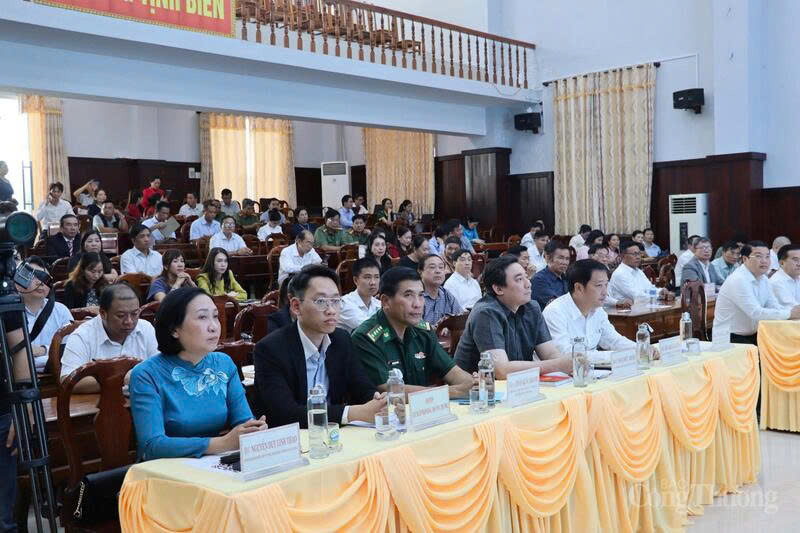
Travel trends 2026: The rise of ultra-personalised journeys
19:05 | 23/03/2025 23:18 | 12/12/2025Tourism
The rapid rise of QR Code payments in recent years is driven not only by their convenience, speed, and low cost, but also by the technology’s growing potential to bring greater transparency to financial flows in e-commerce and commercial activities.
This is increasingly regarded as a fundamental condition for protecting consumers, strengthening tax administration, and shaping a healthy and accountable digital market.
Enhancing transparency in cross-border QR Code payments
Experts agree that to unlock the full potential of this digital tool, establishing interoperability and a unified national QR standard must be treated as a top priority. According to Pham Minh Tuan, from State Bank of Vietnam, Vietnam was among the earliest countries to develop a national framework, the VietQR standard, forming a crucial foundation for harmonising payment solutions across institutions.

VietQR serves as the common identifier for QR-based bank transfers across the NAPAS network. Photo: Nhan Dan Newspaper.
While QR codes issued by banks and payment intermediaries already comply with VietQR, the essential challenge now lies in accelerating system-wide interoperability. “We have the standards in place, but the ecosystem only functions effectively when all parties can connect seamlessly,” Pham Minh Tuan emphasised.
From the perspective of commercial banks, Doan Hong Nhung, from Joint Stock Commercial Bank for Foreign Trade of Vietnam (Vietcombank) underlined the need for timely regulatory guidance to establish a unified “interoperability gateway”. International practice shows that many economies have adopted national QR schemes that allow all payment tools to “speak the same language.” This would enable Vietnamese consumers travelling abroad, and foreign visitors in Vietnam, to make secure payments using a single banking application, without relying on separate e-wallets or physical cards.
Sharing the same view, Phan Thi Thanh Nhan, Director of the Card and Operations Center, Joint Stock Commercial Bank for Investment and Development of Vietnam (BIDV), stressed that building a coherent QR ecosystem is not merely a technical upgrade, but a strategic requirement for expanding cross-border payments. Banks are working closely with payment intermediaries to standardise data and align QR protocols, thereby reducing risks and creating a transparent, seamless operational environment.
Experts concur that once QR interoperability is established nationwide, with Napas at the centre of system coordination, VietQR will evolve into a unified payment infrastructure that spans from domestic transactions to cross-border operations. This will serve as a critical lever enabling QR technology to enhance transparency, ensure safety, strengthen regulatory oversight, and drive the sustainable growth of Vietnam’s digital economy.
Strengthening security in QR Code payments
Nguyen Minh Duc, Head of the Cybersecurity Club, outlined a number of measures essential to safeguarding QR payment systems. In an era where digital payments are expanding rapidly, QR Codes have become a familiar transaction method for both individuals and businesses.
According to Nguyen Minh Duc, raising personal awareness is the first and most crucial requirement. Users must develop habits comparable to handling physical cash: checking the receiving account name before confirming a transfer, using official applications, verifying with merchants to avoid substituted QR codes, and ensuring transaction values are accurate. These small steps can prevent a significant share of existing risks.
At the system level, Nguyen Minh Duc noted that banks and payment intermediaries face mounting pressure as cyberattacks threaten to disrupt operations, compromise data, or exploit vulnerabilities in an increasingly interconnected ecosystem. For this reason, dedicated investment in information security infrastructure, routine compliance checks required by the State Bank of Vietnam, and improved early detection of abnormal transactions are indispensable to protecting the financial system from sophisticated and evolving threats.
He emphasised that ensuring security in QR payments is not solely the responsibility of banks, but a shared obligation across the entire market. When security is strengthened, consumer confidence grows, business trust is reinforced, and the digital payment ecosystem gains the stability needed to contribute meaningfully to the country’s digital transformation.
According to Nguyen Hoang Long, Deputy General Director of the National Payment Corporation of Viet Nam (Napas), the corporation has already integrated with the State Bank’s Simo system to identify suspicious or fraudulent transactions, while also receiving blacklist data from the Ministry of Public Security.
Napas has invested in Big Data analytics and artificial intelligence (AI) to detect early signs of fraudulent behaviour and issue automatic alerts to banks. In parallel, Napas is cooperating with the Vietnam Banks Association to develop a handbook guiding banks in handling suspicious transactions, expected to be officially released in December. This resource will support banks in preventing and responding to fraudulent and impersonation-related activities.
Regarding future development, Nguyen Hoang Long noted that QR payment services will expand domestically and internationally. In the domestic market, Napas is working with banks and payment intermediaries to shift person-to-person (P2P) transfers towards person-to-merchant (P2M) transactions. This transition aims to standardise services, improve user experience, and provide more comprehensive transaction data for regulators overseeing retail activities.
Launched in 2021, VietQR has become the common identifier for QR-based bank transfers across the NAPAS network. Within just three years, this method has permeated everyday life, appearing in traditional markets, street food stalls, parking facilities, and countless other settings. By October 2025, nearly 90 million bank accounts were using Mobile Banking to scan VietQR codes on a daily basis.

19:05 | 23/03/2025 23:18 | 12/12/2025Tourism

19:05 | 23/03/2025 23:04 | 12/12/2025Trade

19:05 | 23/03/2025 23:00 | 12/12/2025Society

19:05 | 23/03/2025 19:39 | 12/12/2025Trade

19:05 | 23/03/2025 19:37 | 12/12/2025News and Events